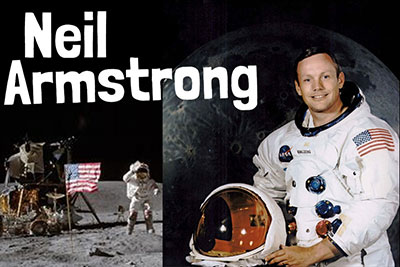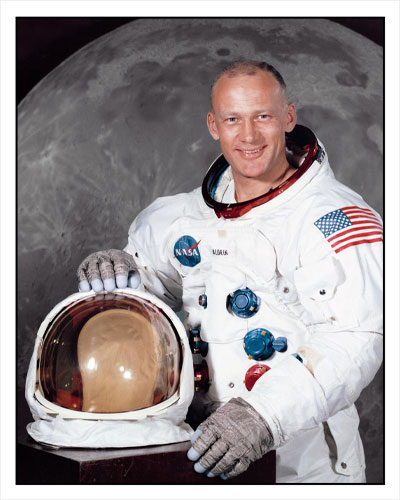 |


And there ain't nothing quite as sad
As watching your heroes die
One by one as they fall
Soon there'll be no heroes at all!
Who's going to fill their shose?
 |
|||
In 1962 Armstrong joined the space program with its second group of astronauts. On March 16, 1966, Armstrong, as command pilot of Gemini 8, and David R. Scott rendezvoused with an unmanned Agena rocket and completed the first manual space docking maneuver. After the docking, a rocket thruster malfunction sent the spacecraft into an uncontrolled spin and forced them to separate from the Agena. Armstrong then regained control of the Gemini craft and made an emergency splashdown in the Pacific Ocean. Moon landing
On July 16, 1969, Armstrong, along with Edwin E. Aldrin, Jr., and Michael Collins, blasted off in the Apollo 11 vehicle toward the Moon (see Apollo program). Four days later, at 4:17 PM U.S. Eastern Daylight Time (EDT), the Eagle lunar landing module, guided manually by Armstrong, touched down on a plain near the southwestern edge of the Sea of Tranquillity ( Mare Tranquillitatis). At 10:56 PM EDT on July 20, 1969, Armstrong stepped from the Eagle onto the Moon’s dusty surface with the words, “That’s one small step for [a] man, one giant leap for mankind.” (In the excitement of the moment, Armstrong skipped the “a” in the statement that he had prepared.) Armstrong and Aldrin left the module for more than two hours and deployed scientific instruments, collected surface samples, and took numerous photographs. On July 21, after 21 hours and 36 minutes on the Moon, they lifted off to rendezvous with Collins and begin the voyage back to Earth. After splashdown in the Pacific at 12:51 PM EDT on July 24, the three astronauts spent 18 days in quarantine to guard against possible contamination by lunar microbes. During the days that followed, and during a tour of 21 nations, they were hailed for their part in the opening of a new era in human exploration of the universe. Later careerArmstrong resigned from NASA in 1971. After Apollo 11 he shied away from being a public figure and confined himself to academic and professional endeavours. From 1971 to 1979 he was professor of aerospace engineering at the University of Cincinnati (Ohio). After 1979 Armstrong served as chairman or director for a number of companies, among them Computing Technologies for Aviation from 1982 to 1992 and AIL Systems (later EDO Corporation), a maker of electronic equipment for the military, from 1977 until his retirement in 2002. He also served on the National Commission on Space (NCOS), a panel charged with setting goals for the space program, and on the Presidential Commission on the Space Shuttle Challenger Accident, the group appointed in 1986 to analyze the safety failures in the Challenger disaster. He was awarded the Presidential Medal of Freedom in 1969, the Congressional Space Medal of Honor in 1978, and the Congressional Gold Medal in 2009. |
 Perhaps the most famous of all space films, these clips document the arrival of the first human beings on the Moon during the afternoon of July 20, 1969. They comprise footage of the landing of the Apollo 11 spacecraft, taken with a 16-mm camera mounted in Edwin Aldrin's window, and Neil Armstrong's first steps on the Moon, recorded by a television camera whose signal was transmitted back to NASA Mission Control in Houston. In the audio can be heard one of the most famous misstatements in history: Armstrong had planned to say “That's one small step for a man, one giant leap for mankind,” but he forgot the “a” in the excitement of the moment.
Perhaps the most famous of all space films, these clips document the arrival of the first human beings on the Moon during the afternoon of July 20, 1969. They comprise footage of the landing of the Apollo 11 spacecraft, taken with a 16-mm camera mounted in Edwin Aldrin's window, and Neil Armstrong's first steps on the Moon, recorded by a television camera whose signal was transmitted back to NASA Mission Control in Houston. In the audio can be heard one of the most famous misstatements in history: Armstrong had planned to say “That's one small step for a man, one giant leap for mankind,” but he forgot the “a” in the excitement of the moment. 